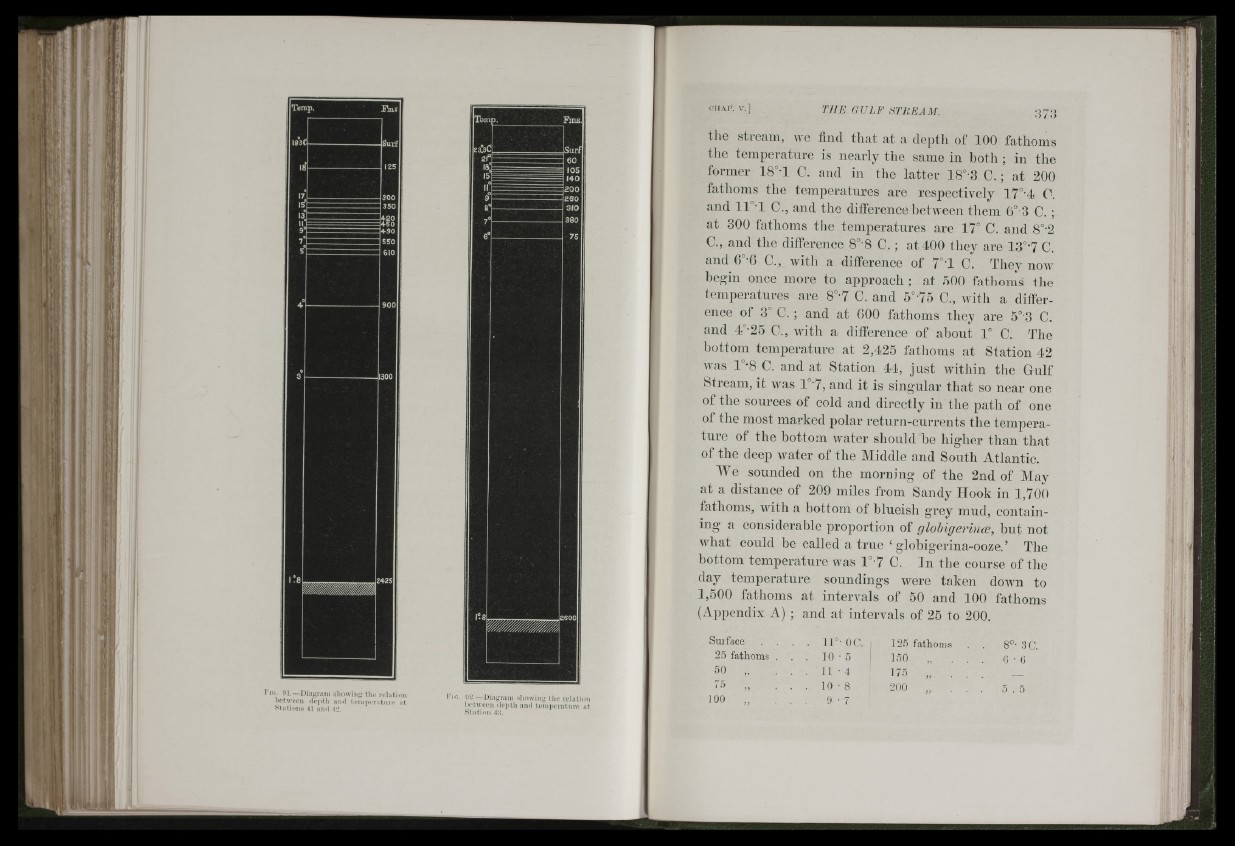
Ì
if:
Pi i
n
•j
I
AT
m
'2 ■
Fir ;. 0 1 .— DingTi i in s l i ow i i i g ( l i e r c k i t i n n
l i f ' tw c o n d o p i l i a n d t o n i p . T i t i i v o ;it
S t i i t i o n s 41 a n d 42.
FiG. {12, — Diagram sh owin g (h e re la tio n
b e tw e en d e jith an d te in p e ra tn re a t
Sta i inn 43.
tlie stream, we find th at at a depth of 100 fathoms
the temperature is nearly the same in both ; in the
former 18°T C. and in the latter 18°'3 C. ; at 200
fathoms the temperatures are respectively l7°-4 C.
and 11 T C., and the difference between them 6°-3 C. ;
at 300 fathoms tlie temperatures are 17° C. and 8°'2
C., and the difference 8°'8 C. ; at 400 they are 13°’7 C.
and 6°-6 C., vvitli a difference of 7°'l C. They noAv
begin once more to approach ; at 500 fathoins the
temperatures are 8°-7 C. and 5°’75 C., with a difference
of 3° C. ; and at 600 fathoms they are 5° 3 C.
and 4°-25 C., with a difference of about 1° C. The
bottom temperature at 2,425 fathoms at Station 42
Avas l°-8 C. and at Station 44, ju st witiiin the Gulf
Stream, it was 1 '7, and it is singular th a t so near one
of the sources of cold and directly in the path of one
of the most marked polar return-currents the temperature
of the hottom Avater should be higher than th a t
of the deep Avater of the Middle and South Atlantic.
Mfo sounded on the morning of the 2nd of May
at a distance of 209 miles from Sandy Hook in 1,700
fathoms, AA'ith a bottom of blueish grey mud, containing
a considerable proportion of g l o U g e r i n c B , but not
Avhat could he called a true ‘ glohigerina-ooze.’ The
hottom temperature was l°-7 C. In the course of tlie
day temperature soundings were taken down to
1,500 fathoms at intervals of 50 and 100 fathoms
(Appendix A) ; and at intervals of 25 to 200.
Surface
2,5 fathoms
50 „
^5 „
100 „
11°- OC.
10 • 5
11 ■ 4
10 • 8
9 • 7
125 fathoms
150 „ .
175 .
200 .. ,
8°- 3C.
G • G
Ì
hr-'
fl
I :9l